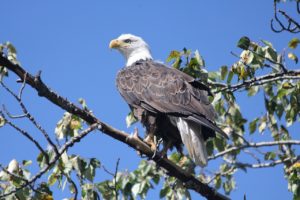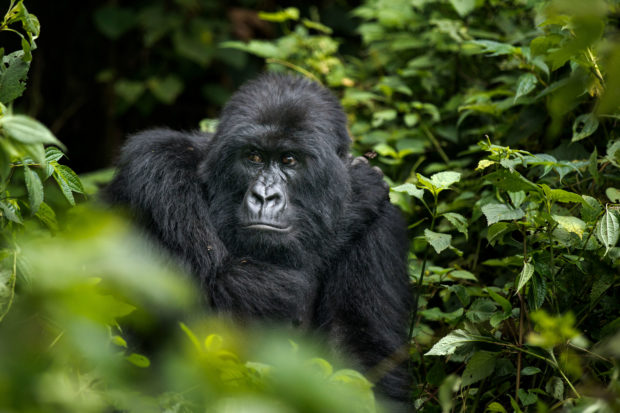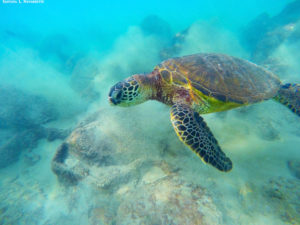We have much more to do and your continued support is needed now more than ever.
Visionaries in Conservation: The Women Behind the Movement


Dr. Rachel Carson is often heralded as the woman who inspired the modern conservation movement. Her book Silent Spring, published in 1962, serves as the genesis of half a century of environmental activism. A prominent wildlife biologist, her writings alerted Americans to the connection between the declining bird populations and the prevalence of the pesticide DDT. As a scientist and writer, Dr. Carson brought to light the incredible harm human-made chemicals wreaked on wildlife.
In publishing and disseminating her findings, Dr. Carson faced heavy backlash. Other scientists, chemical companies, and her own colleagues fought to suppress her research ー not least because she was a woman. In the 1950s and 60s, when societal expectations for women afforded few career options outside of the home, she stood out as an outspoken female scientist and wildlife activist. Her work ultimately paved the way for conservationists to push for strong environmental regulations, including the creation of the Environmental Protection Agency.

Dr. Carson’s life and work are a testament to the lives and work of hundreds of women who came before her, and whose legacy is carried through the lives and work of hundreds of women today. Women – particularly indigenous women and women of color – have been leaders in the American conservation movement from its inception to its modern existence.
Twentieth Century Heroes

From Margaret “Mardy” Murie, recipient of the Presidential Medal of Freedom for her writing, work, and instrumental role in the passage of the Wilderness Act; to Winona LaDuke, prominent climate activist and former Green Party vice presidential candidate; the actions of women in the twentieth century brought global attention to issues of wildlife and habitat conservation, climate change, water quality, and many other major environmental issues.
Scientists like Dr. Dian Fossey, primatologist and conservationist whose research shaped modern-day primate studies, and Dr. Margaret Hiza Redsteer, research scientist at the U.S. Geological Survey whose work combines traditional and conventional science practices to address water scarcity issues, showed men and women around the country that it was possible to defy the gendered expectations of their times. While, even now, academia remains a “boys’ club” these women made inroads for women in the sciences and inspired young girls across the country to pursue science in the field and in the lab.

Where Science Meets Activism
In the 2000s and 2010s, environmental and conservation science have become increasingly intertwined with environmental justice and conservation activism. For example, Dr. Mona Hanna-Attisha, a pediatrician and professor, tested the water quality and found elevated levels of lead in Flint, Michigan; but just identifying the problem wasn’t enough. Dr. Hanna-Attisha worked with the community to raise the profile of the crisis and to call for action to address the contamination.
As the effects of climate change have grown increasingly pronounced, and the need to address it increasingly urgent, many women stand at the intersection of climate science and climate action, using their expertise to push for global climate action in policy and practice. The effects of climate change and pollution are often felt disproportionately among women and communities of color. Karen Diver, one of two tribal representatives who served on President Obama’s Task Force on Climate Resilience, worked to expand awareness of climate change effects on Native American communities and call for greater response from the federal government to promote equality in this issue.
Our Future Leaders
This decade has seen unprecedented youth environmental activism. In 2019, students are organizing across the globe to demand action on climate change, inspired by 16-year-old Greta Thunberg’s protests on the steps of the Swedish Parliament. Her American counterpart, 13-year-old Alexandra Villasenor, is an outspoken organizer of student actions across the country.
Mari Copeny – nicknamed “Little Miss Flint” – has been working since the age of 8 to educate the public about the water crisis in Flint, Michigan and to call for action to solve the crisis. She raised over $10,000 in two weeks to help local students in need get back to school and served as the youngest Women’s March Youth Ambassador, National Youth Ambassador for the Climate March, and Youth Ambassador for Equality for Her – all before her twelfth birthday.

In addition to environmental activism, young women are making strides in science to tackle the greatest environmental challenges. Seventh grader Anna Du from Massachusetts was selected as a finalist in the highly competitive Broadcom MASTERS competition for her creation of a remote-operated vehicle (ROV) to identify plastics on the ocean floor. Her advances in science, technology, engineering and mechanics (STEM) continue to promote girls’ entry into the field.
Together, these young women have come to represent a new era of environmental activism and justice – and have brought the newest generation of women into the spotlight. Standing on the shoulders of the giants before them, they have been able to have a massive social impact despite – or perhaps because of – their youth. We can look to them for the future of environmental justice movements.
Five Women Conservationists To Honor on International Women’s Day
Learn More!Women’s Initiatives at NWF
National Wildlife Federation strives to promote diversity, equity, inclusion, and justice in all our work. Among our wildlife-focused initiatives are intersections with women’s empowerment projects, including the following:
Artemis
Now more than ever, women hunters and anglers play a crucial role in driving conservation efforts. Named for the Greek goddess, Artemis is a group of bold, impassioned sportswomen who are out to change the face of conservation by engaging in every facet of the sporting conservation life. Artemis works diligently for the protection of America’s 640 million acres of public lands and the wildlife that rely on them. Moreover, the program aims to build leadership among sportswomen while redefining what it means to be a woman in conservation. Learn more >
Women in Conservation Leadership
The National Wildlife Federation’s Women in Conservation Leadership Program develops, empowers and champions women leaders within the environmental community. Women in Conservation Leadership provides skill building, training and networking opportunities to bolster and support women in the environmental field. The Program does this by acknowledging female-specific barriers and by equipping women with networking opportunities, coaching, and guidance to cultivate success in their personal and professional lives. WCL supports women in all stages of their career and at every level of leadership. Read More >
Education Initiatives
National Wildlife Federation has a long history in environment-based education, providing learning opportunities around the diverse needs of wildlife and habitats in a changing environmental, social and economic environment. Project-based learning closes the gaps in science education for all students, specifically girls and under-served populations. Our programs are rooted in research, and research consistently shows students taught using project- and place-based learning show:
- enhanced student performance
- increased student motivation and engagement
- improved teacher/student interaction
- Increased development of specific 21st Century Learning skills: creativity, critical thinking, collaboration, and communication.
Learn more about the National Wildlife Federation’s education programs and campaigns.





















